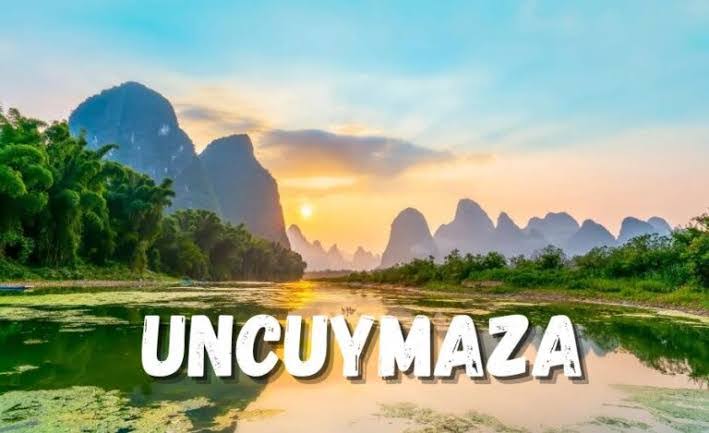Nestled in the hidden corners of South America lies a little-known yet fascinating aspect of local folklore: Uncuymaza. For those unfamiliar with this term, Uncuymaza carries with it the weight of cultural significance, deeply rooted in history and tradition. This article will unravel the mysteries behind Uncuymaza, offering an exploration of its origins, its place in the world today, and how it shapes the community that embraces it. Whether you are a history enthusiast or someone intrigued by cultural phenomena, Uncuymaza is bound to capture your interest.
Understanding Uncuymaza
Uncuymaza isn’t just a word; it’s a concept that speaks to the soul of a people. Derived from ancient traditions, Uncuymaza has evolved into a significant cultural symbol, representing unity, history, and resilience. To understand the importance of Uncuymaza, one must delve into the historical tapestry from which it originated.
Its name, though unfamiliar to many outside its native region, is whispered with reverence by those who live within its cultural embrace. A mix of ceremonial importance, spiritual connotations, and social symbolism, Uncuymaza thrives as a living tradition that continues to influence local practices to this day.
The Historical Significance of Uncuymaza
Uncuymaza is a vital element of the cultural fabric that stretches back centuries. Historically, it is believed to have been born out of a period of social upheaval, where communities sought ways to preserve their identity. This particular tradition encapsulates the resilience of a group of people who, despite external pressures, maintained their customs and heritage.
From its inception, Uncuymaza served as a rallying point for community gatherings, celebrations, and religious practices. It has been closely associated with festivals that mark significant moments in the agricultural cycle, such as the planting and harvesting seasons. Moreover, the lore surrounding Uncuymaza suggests that it may have had protective qualities, guarding communities from spiritual harm and ensuring the prosperity of the land.
Uncuymaza in Modern Times
While Uncuymaza is deeply rooted in the past, it is not merely a relic of history. Today, Uncuymaza continues to be celebrated in various forms, from local festivals to artistic representations. The tradition has evolved, blending modern elements with age-old practices, and it remains a powerful symbol of cultural pride.
What makes Uncuymaza particularly unique is its ability to adapt without losing its essence. Festivals featuring Uncuymaza often include traditional dances, storytelling, and offerings to deities believed to govern the land and its people. Despite the changes that time has brought, these celebrations remain deeply personal and community-oriented, ensuring that the spirit of Uncuymaza is passed on to future generations.
The Cultural Rituals and Practices of Uncuymaza
Cultural rituals surrounding Uncuymaza are both intricate and profound. It isn’t simply a one-day event; rather, it is a series of ceremonies that reflect the cycle of life, death, and rebirth. The preparation alone takes months, with families and communities coming together to create costumes, craft offerings, and prepare traditional meals.
Central to these rituals is the belief in balance and harmony with the natural world. The people who celebrate Uncuymaza often engage in acts of purification, intended to cleanse both the body and the spirit. Offerings are made to ancestral spirits, as well as to the natural elements like water, earth, and fire, all of which play a crucial role in sustaining life.
The Symbolism Behind Uncuymaza
The symbolism embedded in Uncuymaza rituals is rich and varied. One of the most notable aspects is the use of specific colors, each of which holds a unique meaning. For example, red is often associated with life and vitality, while white symbolizes purity and the hope for spiritual guidance. Similarly, the foods prepared during these rituals are more than sustenance—they are offerings that convey respect and gratitude to both ancestors and deities.
Another critical aspect of Uncuymaza’s symbolism is its connection to the land. Those who participate in Uncuymaza see themselves as stewards of the earth, with a responsibility to maintain its health and well-being. The natural world, in their eyes, is a living entity, deserving of the same respect and care that they would give to family members.
The Spiritual Aspect of Uncuymaza
At its core, Uncuymaza is as much a spiritual practice as it is a cultural one. Many believe that participating in Uncuymaza brings them closer to their ancestors and the divine forces that govern their lives. Through dance, music, and ritual, practitioners aim to bridge the gap between the physical and spiritual worlds, seeking guidance, protection, and blessings.
In the past, it was not uncommon for shamans or spiritual leaders to play a central role in Uncuymaza ceremonies. These figures were believed to have the ability to communicate with the spirit world, offering insight and advice to the living. Though this practice has waned in recent years, the spiritual significance of Uncuymaza remains intact, with many people still viewing it as an opportunity for personal and communal reflection.
The Social Impact of Uncuymaza
The social impact of Uncuymaza cannot be understated. In many communities, it serves as a unifying force, bringing people together in celebration and mutual respect. In regions where resources may be scarce, the collective spirit fostered by Uncuymaza ensures that everyone has a role to play, whether it’s in the preparation of food, the crafting of costumes, or the sharing of stories.
This sense of community extends beyond the immediate participants. Uncuymaza festivals often draw visitors from neighboring areas, fostering a sense of cultural exchange and understanding. For many, these celebrations offer a chance to reconnect with their roots, to learn from the past, and to share their cultural heritage with the world.
FAQs
What is the origin of Uncuymaza?
Uncuymaza originated from ancient South American traditions and is deeply connected to spiritual and agricultural practices. It is a symbol of community resilience and cultural pride.
How is Uncuymaza celebrated today?
Today, Uncuymaza is celebrated through festivals that include traditional dance, music, and offerings. It remains a significant cultural event that emphasizes community and spiritual connection.
Is Uncuymaza a religious practice?
While Uncuymaza has spiritual elements, it is not solely a religious practice. It combines cultural, social, and spiritual traditions, making it a holistic event for participants.
What is the symbolism of colors in Uncuymaza?
Colors in Uncuymaza hold specific meanings—red represents vitality, white stands for purity, and other colors are chosen for their connection to natural elements and spiritual significance.
How does Uncuymaza connect to the land?
Uncuymaza rituals emphasize the harmony between humans and nature. Participants view themselves as caretakers of the earth, making offerings to ensure the land’s continued prosperity.
Why is Uncuymaza important for cultural preservation?
Uncuymaza helps preserve the history and traditions of the communities that celebrate it. It is a way for people to stay connected to their heritage while fostering unity and shared cultural pride.
Conclusion
Uncuymaza stands as a testament to the enduring strength of culture and tradition. It embodies the resilience of a people, the spiritual connection to the land, and the power of community. Though rooted in the past, Uncuymaza continues to thrive in the present, offering a unique glimpse into the rich cultural tapestry of South America. Whether you are drawn to its history, its rituals, or its profound symbolism, Uncuymaza is a tradition worth exploring. By understanding and celebrating Uncuymaza, we not only honor the past but also ensure that its legacy endures for generations to come.



